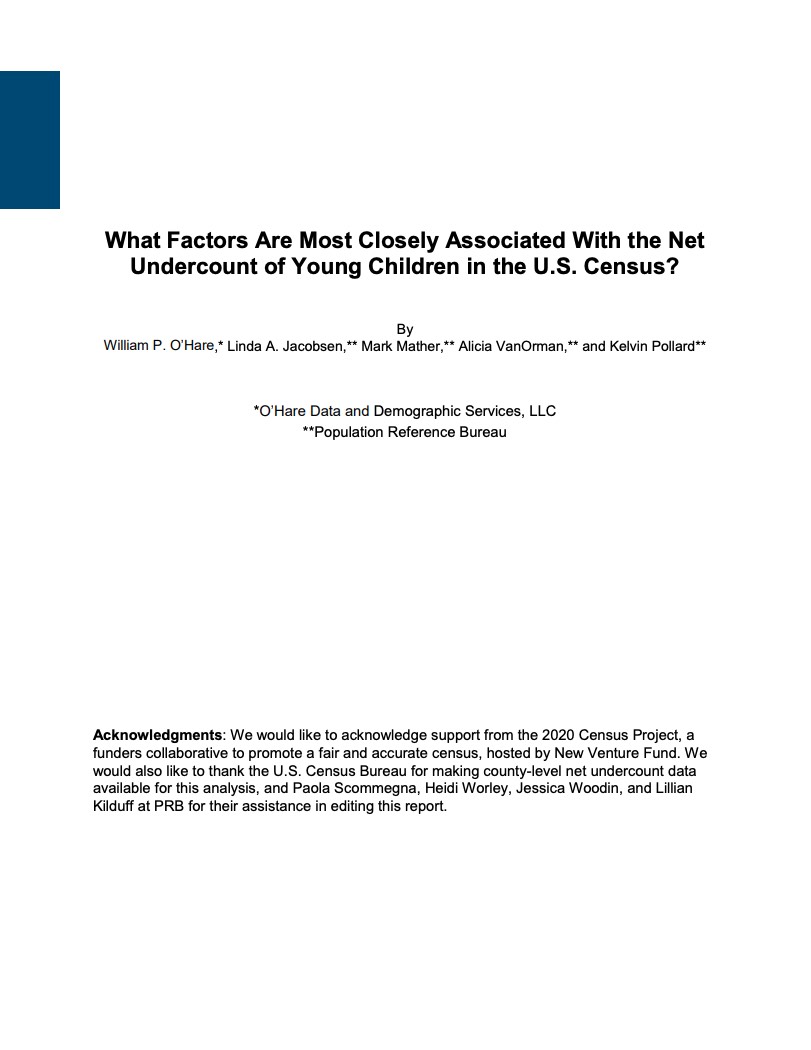In the 2010 U.S. Census, young children (ages 0 to 4) were more likely to be missed than any other age group, Census Bureau research shows.
More than one in 10 young children were not counted in 2010, and the net undercount rate for young children (the percent of children who were missed minus the percent who were double counted) was nearly 5 percent. The net undercount for young children has been increasing while that for adults has been improving since the 1980 Census.
While several factors have been linked to the undercount of young children, most previous studies on this topic have been descriptive, rather than analytical in nature. Our analysis focuses on the factors that are most closely associated with the net undercount of children in the census. Data are based on the Census Bureau’s new experimental Demographic Analysis (DA) estimates of the net undercount of young children and American Community Survey (ACS) estimates for the 261 largest counties.
Our results suggest that two data sets currently being used to identify areas where young children are more likely to be missed by the census—the percent of young children living in hard-to-count census tracts and the Low Response Score (based on mail return rates)—are not very good predictors of net undercount rates for young children in large counties.
Our preliminary results indicate that a higher net undercount of young children is most closely associated with the following variables:
- Percent of racial/ethnic minorities.
- Percent of households that are linguistically isolated.
- Percent of young children living with grandparent householders.
- Percent of young children living with nonrelatives or in group quarters.
The superior results of our model in predicting net undercount rates for young children indicate this line of research should be pursued further to better identify hard-to-count areas for young children in the 2020 Census.
We hope the results of this analysis will help advocates and others better target geographic areas and population subgroups for Get-Out-the-Count efforts to reduce the undercount of young children and help ensure an accurate 2020 Census.
We would like to acknowledge support from the 2020 Census Project, a funders collaborative to promote a fair and accurate census, hosted by New Venture Fund. We would also like to thank the U.S. Census Bureau for making county-level net undercount data available for this analysis, and Paola Scommegna, Heidi Worley, Jessica Woodin, and Lillian Kilduff at PRB for their assistance in editing this report.


 ">
">